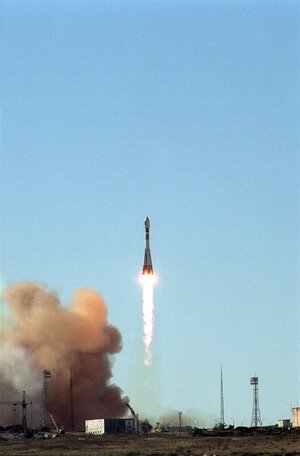17 April
1970: On 17 April 1970, Apollo 13 landed safely with a splashdown in the Pacific Ocean, four days after the spacecraft aborted its mission while it was four-fifths of the way to the Moon. It was crippled when a tank containing liquid oxygen burst. The astronauts made an extraordinary escape.
The spacecraft entered the atmosphere 121 920 metres above the Earth and hurtled towards the ground at 40 000 kilometres per hour.
The command capsule splashed down in the Pacific Ocean in the early morning. The lunar module and the service module had been jettisoned before re-entry into the Earth's atmosphere.
The three astronauts were airlifted onto rescue boat 'Iwo Jima' where they spent the night before flying to Samoa to be reunited with their families.
Upon his return, astronaut A.J. Lovell, Jr. was the first American astronaut to travel over 700 hours in space.
1598: On 17 April 1598, Giovanni Riccioli was born.
Riccioli was an Italian astronomer who was the first to observe, in 1650, a double star (two stars so close together that they appear to be one). It was Mizar in Ursa Major, the middle star in the handle of the Plough.
He also discovered satellite shadows on Jupiter. In 1651, he assigned the majority of the lunar feature names in current use. He named the more prominent features after famous astronomers, scientists and philosophers, while the large dark and smooth areas he called "seas" or "maria". The lunar seas were named after moods (Seas of Tranquillity, Serenity) or terrestrial phenomena (Sea of Rains, Ocean or Storms) His map was published in Almagestum Novum in 1651.















 Germany
Germany
 Austria
Austria
 Belgium
Belgium
 Denmark
Denmark
 Spain
Spain
 Estonia
Estonia
 Finland
Finland
 France
France
 Greece
Greece
 Hungary
Hungary
 Ireland
Ireland
 Italy
Italy
 Luxembourg
Luxembourg
 Norway
Norway
 The Netherlands
The Netherlands
 Poland
Poland
 Portugal
Portugal
 Czechia
Czechia
 Romania
Romania
 United Kingdom
United Kingdom
 Slovenia
Slovenia
 Sweden
Sweden
 Switzerland
Switzerland
































